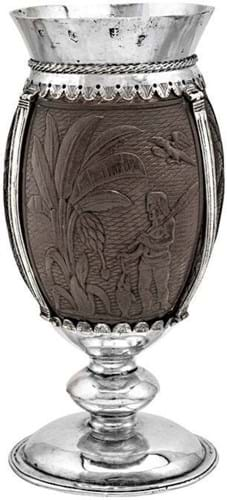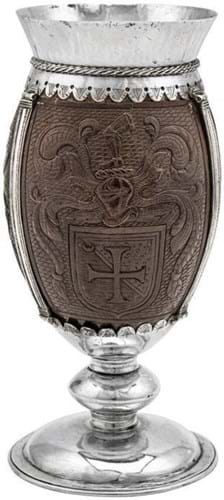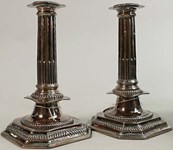Mangie (or Mangy) was probably the son of Henry Mangie, a locksmith of York, whose uncle was a goldsmith.
Made a freeman of Hull at the age of 25, he ran a successful enterprise, producing good-quality wares, predominantly tankards, tumbler cups and trefid spoons, for local church, civic and domestic use.
In 1951, when Kingston-upon-Hull Museum held an exhibition as part of the Festival of Britain which displayed most of the known 101 pieces of extant Hull silver at that time, almost one third were by Mangie or his widow Katherine. She had continued to operate the business, using journeymen and apprentices, into the 18th century.
Edward Mangie Junior joined the firm in 1695 – the year before the provincial marking of silver was formally abolished to be replaced with a formal structure of assay offices. Thereafter silver made in Hull was sent to either York or Newcastle for assay.
All Hull hollowware is rare.
Fashionable form
This 7½in (19cm) high cup (an exotic form fashionable in London in the previous century) was offered by Chiswick Auctions (25% buyer’s premium) on October 20. Guided at £12,000-16,000, it sold to an international trade buyer at the low estimate.
It incorporates a coconut carved to one side with two Polynesian men holding clubs, one grappling with a snake, the other holding a fish caught on a line each next to coconut trees. To the other is a coat of arms, possibly for Alman of Pevensey, and Warbleton, Sussex.
A recent auction precedent would be hard to find but the auction house could point to a provincial silver gilt mounted coconut cup of comparable form (but Elizabethan period) by Peter Quick of Barnstaple that sold Christie’s in May 2019 for £22,000.
















